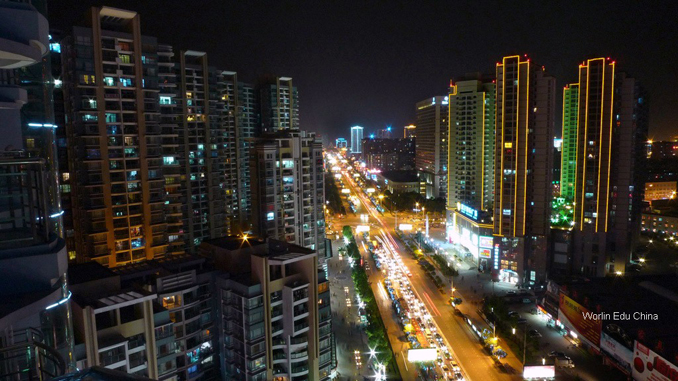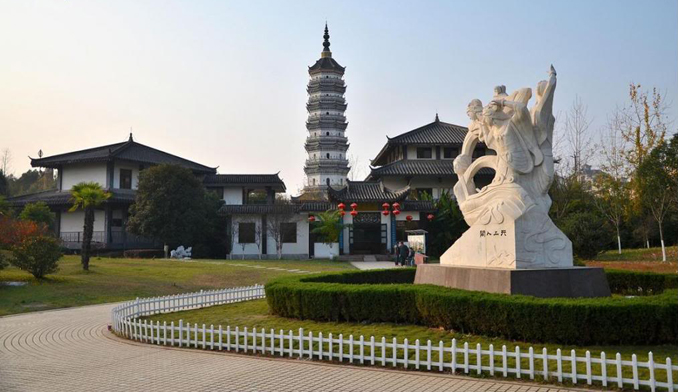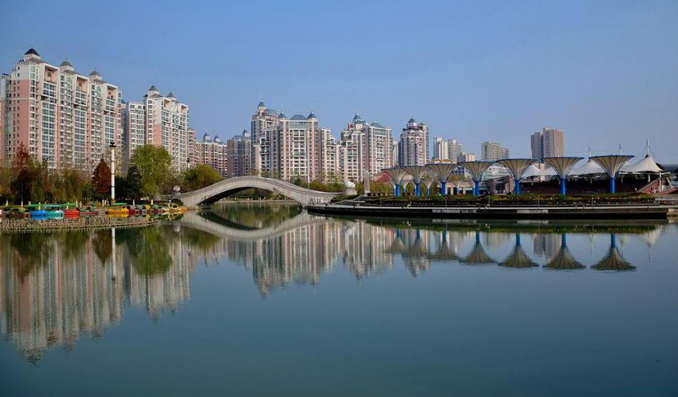Posted on: February 18, 2015 | 
Hefei, the capital of Anhui province in Eastern China
Hefei, formerly known as Luzhou or Luchow, is the political, economic and cultural center of Anhui, and has played an important role in commercial transactions, traffic and information exchange. Geographically, the word “Hefei” means the converging point of the East and South Fei Rivers. As it was made the prefectural seat of Luzhou in the Ming and Qing dynasties, it also became known as Luzhou. Located between the Yangtze and Huaihe Rivers and beside the Chaohu Lake, Hefei is nearest to the coastal cities in Eastern China.
 |
Hefei skyline at night |
The name “Hefei” was first mentioned in “Shi-Ji” (“Historical Records”), written by Sima Qian (a great scholar and historian of the Han dynasty) in the 2nd century BC. He wrote: “Hefei, a place economically influenced both by North and South, is a commercial center for fur, leather, aquatic products and timber. It was made a city in 1949, and became the capital of Anhui Province in 1952”.
Hefei exemplifies the subtropical humid monsoon climate to be found in an area with clearly defined seasons and moderate rainfall. Spring is somewhat erratic, but in autumn, the sky is clear and the air is crisp. The plum rain season is noticeable, but rainfall is more abundant in the summer. The average annual temperature is 15.7C (60.26F). Precipitation is nearly 1000 mm, and sunshine stays till 2100 hours.
Yulan is the city’s most famous tree, while the sweet-scented Osmanthus, with pomegranate flavor, is the most famous flower.
In the late Eastern Han Dynasty (25-220), Hefei was chosen as the local government seat of many states and prefectures. Hence it was a crucial military and administration center in the regions along the Yangtze and Huai Rivers.
 |
Hefei is a comprehensive transportation hub of China. With recent improvements in the traffic network, it only takes 45 minutes to travel from Hefei to Nanjing in Jiangsu Province, and about 2 hours from Hefei to Shanghai or Wuhan. Since ancient times, Hefei has been referred to as “the leading town and communication hub in the regions along the Yangtze and Huai Rivers”. Nowadays, it forms the center of a circular region covering 7 provinces and 1 metropolis of China in its 500 km radius.
Hefei also has a lot of historical significance. Several influential personalities were born here, including Yang Xingmi, King of the Wu State in the Five Dynasties and Ten States period (907-960); Li Hongzhang (1823-1901), a leading official in the late Qing Dynasty; Liu Mingchuan (1836-1896), the first governor of Taiwan in the Qing Dynasty; and Dr. Chen-Ning Yang, a world-famous scientist.
Visitors are sure to fall in love with Hefei, with its charming Huangmei Opera, delicious food which combines the tastes of North and South, and fascinating local customs. The famous historical government official, Bao Zheng, lived in Hefei in the Northern Song Dynasty (960-1127). Due to his unparalleled honesty, fairness, integrity and wisdom, he is known as "Lord Bao" or "Justice Bao”.
Hefei is also the birthplace of the Huai Army and its main leaders. Created by Li Hongzhang in the 1960s, it played an important role in politics, military, diplomacy and economy in the late Qing Dynasty.
 |
Hefei is a green and sustainable city. In 1992, it was listed among the first three “National Garden Cities”, along with Beijing and Zhuhai City. With a green coverage rate of 35% and green space of 10.15 square meters per capita, it ranks as one of the most suitable cities for living in China. The harmonious pattern of "gardens intermingling with the city" makes Hefei unique in the whole country. The open around-the-city park, covering 137.6 hectares with an 8.7 km length, is connected with the old part of the city, which gives it a distinctive and pleasant view of ancient lands and waters.
As one of China’s best tourist destinations, Hefei has many exquisite tourist attractions, such as the Baogong Park, Hefei Wildlife Park, Hui Garden, Xiaoyaojin Park (Leisure Ford), Shushan Forest Park, Zipeng Mountain National Forest Park, Daishan lake, Ancient Sanhe (Three Rivers) Town, etc. It is also an important tourist distribution center in Anhui Province, located around famous scenic spots of China such as Mt. Huangshan and Mt. Jiuhuashan.
Hefei is the first and only Science and Technology Innovation Pilot City in China, and is also a member of the WTA (World Technopolis Association). It boasts over 200 research institutes at the national and provincial level, including the Hefei Institute of Physical Science under the Chinese Academy of Sciences. Hefei has 59 higher learning institutions including the University of Science and Technology of China (USTC). It is also abundant in human resources. 2 of China’s 8 National Key Scientific Engineering Projects are located in Hefei; one is the National Synchrotron Radiation Laboratory (NSRL) under the USTC, and the other is the Experimental Advanced Superconducting Tokamak (EAST) under the Hefei Institutes of Physical Science (HIPS).
You may also like: